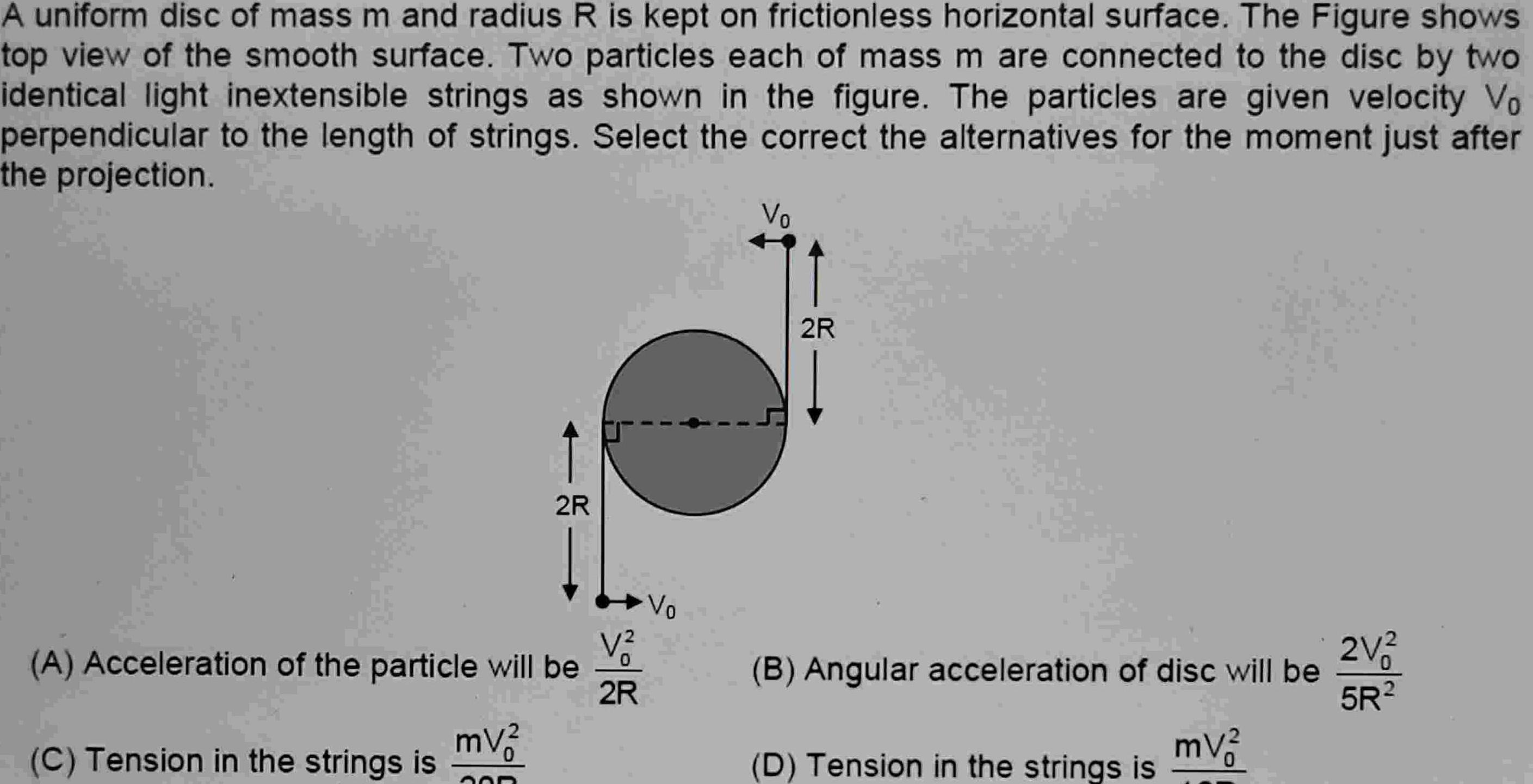Question
Question: A uniform disc of mass m and radius R is kept on frictionless horizontal surface. The Figure shows t...
A uniform disc of mass m and radius R is kept on frictionless horizontal surface. The Figure shows top view of the smooth surface. Two particles each of mass m are connected to the disc by two identical light inextensible strings as shown in the figure. The particles are given velocity V0 perpendicular to the length of strings. Select the correct alternatives for the moment just after the projection.

Acceleration of the particle will be 2RV02
Angular acceleration of disc will be 5R22V02
Tension in the strings is 2RmV02
Tension in the strings is 4RmV02
Options (A) and (C).
Solution
Let the disc be smooth and the particles be attached by light inextensible strings of length 2R at fixed points on its rim. In the “top view” the particles are tied at the “north” and “south” points (i.e. at the extreme ends along the vertical line through the disc center) so that the strings lie along the vertical (north–south) direction. (Thus the line joining the centre of the disc to the point of attachment is along the string.) Immediately after the projection the particles (of mass m) have speeds V0 in directions perpendicular to the strings (i.e. horizontally left for the “top” particle and right for the “bottom” particle). Since the string remains taut the particle must “turn” in a circle of radius equal to the string’s length (2R). Hence for each particle the necessary (centripetal) acceleration is
ap=2RV02
Thus the tension in the string which provides this centripetal force is
T=m⋅ap=2RmV02
Now, the force on the disc due to each string is equal and opposite to the force on the particle. At the point of attachment the forces act along the string (i.e. radially through the disc centre). Hence the two forces have zero net torque on the disc. (They cancel both in translation and in rotation.) Therefore – at the very instant just after projection – no angular acceleration is imparted to the disc.
Summarizing the alternatives:
- (A) “Acceleration of the particle will be V02/(2R)” is correct.
- (C) “Tension in the strings is mV02/(2R)” is correct.
- (B) and (D) are not.
